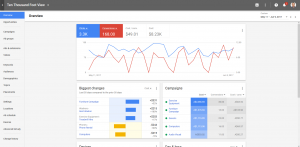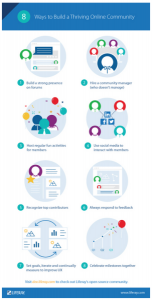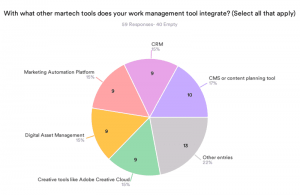Adapt your marketing strategy to new privacy regulations and AI advancements to to stay ahead of the curve.
The only constant in marketing is change. With new trends, technologies and techniques emerging almost daily, the importance of swiftly adapting only increases. Specifically, two connected areas in the marketing world have seen rapid evolution over the last few years: privacy and technology.
The evolving landscape: Privacy regulations and technological advancements
Privacy has become a growing concern in the global marketing landscape. European regulations continue to set precedents for increasing restrictions on user data collection. In the U.S., states are following in Europe’s footsteps by enacting similar restrictions on data collection and usage. Since the California Consumer Privacy Act (CCPA) took effect in 2018, 15 states have established their own privacy regulations, with more expected to follow.
Technology and the meteoric rise of generative AI have upended traditional marketing efforts by revolutionizing nearly every aspect of the marketing lifecycle, from content generation to measurement and everything in between — and data is central to any successful marketing campaign. However, with customer interactions occurring across a growing number of touchpoints and the eventual sunset of third-party cookies, data collection is also becoming more fragmented.
Today’s legal and technical constraints are progressively affecting data collection, a critical component for targeting and campaign activations — so marketers need to follow a strong change management strategy to maintain a competitive advantage. This is especially important now, as modern tools rely heavily on automation and algorithms. That is why investments and efforts to adapt should now focus on data collection processes enabling marketers to target the right audiences and drive ROI.
How to navigate privacy changes
Here are three key strategies to navigate and accelerate changes that come along with the evolving privacy landscape:
- First, define the right marketing strategy and set of solutions for your organization.
- Second, establish clear success frameworks and onboard champions early on to help you get there.
- Third, harness the data you have to achieve your business goals.
1. Define the right marketing strategy for your organization
Before diving into the implementation of any technical changes intended to adapt to privacy regulations, it’s important to take a closer look at the current state of your marketing mix and martech stack.
Step back and review your current setup and business goals, then evaluate how your current solutions and key metrics will be impacted by industry privacy changes. Once you have a clear understanding of your current state and the potential impact of new and upcoming privacy restrictions, you can start to identify and narrow down the right set of privacy solutions that will help you bridge the gap between activation and measurement.
With a steady stream of new solutions continuing to enter the market as privacy evolves, you’ll need to rely on this current versus future state assessment, along with your business goals, to identify the right solutions for your organization. Given your unique set of business goals and marketing activities, your solutions will likely look different from others, even in the same industry.
You’ll want to start by making the most of the tools and data you already have in place, then think about investing in new tools and tech to adapt to privacy standards. As you hone in on the right new solutions to roll out across your organization, ensuring a resilient measurement framework for accurate reporting on your media activations is critical.
You’ll also want to invest in tools that leverage your owned, first-party data. Tools like customer data platforms (CDPs) can help bridge the gap by centralizing data from various touchpoints, transforming this data to inform audience strategies and then personalizing customer interactions across your activation channels effectively.
2. Establish your champions and measures of success before rolling out changes
It is important to create a north star for success that will guide you and your team in the right direction. Once you understand the context and have your solutions identified, you can define clear KPIs to measure success at every level — business or organization, cross-functional teams and granular use cases. Establishing these KPIs will help you recognize when to pivot and when to secure additional internal support.
In addition to setting clear KPIs, it’s critical from the start of any change in process or tools that you establish strong data governance and ownership in your organization and secure buy-in from end users across business and tech teams.
One helpful tactic is to conduct listening sessions with cross-functional stakeholders early on by onboarding a “steering committee” or a group of power users/change advocates and champions and then schedule recurring meetings with this group to inform them, gather their input and foster their top-down support to their respective teams.
Ensure both technical teams and business teams are educated and bought in before a change is rolled out. Keep them in the loop on what’s working and not working as the rollout proceeds. You can also appoint a third party, such as an agency or consultancy, to help fill the cross-functional role that brings together both business and technical perspectives if that person or team doesn’t yet exist in your organization.
3. Harness the power of your data to achieve your goals
Navigating privacy laws and evolving customer preferences makes data collection increasingly challenging. However, understanding your customer data and all first-party data is crucial for the effective implementation of new campaigns. To do this, you need to leverage the best tools available — and a CDP is one example of this. CDPs can be helpful as they utilize the various types of data an organization generates and collects about its customers to create a unified 360-degree view of the customer base.
One of the benefits of a CDP is its capacity to bring multiple sources of data together into one platform for a robust single view of your customer, which is essential amid increasingly fragmented and siloed data. You can then use advanced segmentation and targeting capabilities offered by many CDPs to test out optimizations across your activation channels, measuring success against core KPIs and iterating accordingly as you proceed.
While CDPs are a resourceful tool for activations, they are not a be-all and end-all solution. Finding a solution that will give you a resilient measurement framework is equally important. For example, Google’s Enhanced Conversions leverages first-party data to enhance the match rate between conversions and ad interactions, leading to better attribution and more precise measurement of campaign performance.
No matter the solution(s) you choose, focus on testing them first to ensure you can scale your campaign. Following an iterative, test-and-learn approach and optimizing your results as you go will also help you secure buy-in from additional teams, brands and stakeholders in your organization to scale out any new changes or solutions.
Driving long-term success
Understanding your approach and the effectiveness of your marketing campaigns before making adjustments to your strategy will set your organization up for success in today’s ever-changing marketing landscape.
Every brand and its customers are unique, so first-party data will continue to be critical in tailoring your marketing initiatives in ways that drive business impact and ROI.
As industry change continues to disrupt marketing, strategies for effective change don’t stop at the rollout of a new tool or technology. Using the principles outlined above, you can position your organization for adaptability, alignment and business impact in the short and long term.
The post 3 strategies to navigate change as digital privacy evolves appeared first on MarTech.
MarTech(6)
Report Post






